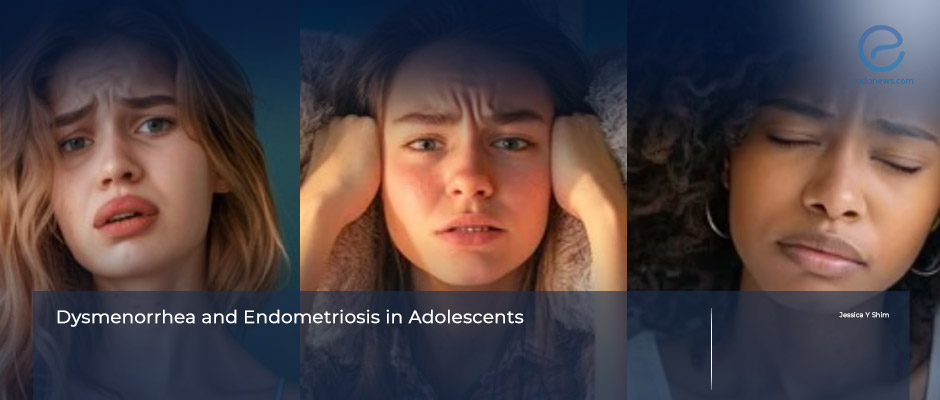Endometriosis in Adolescents: Diagnosis, Treatment, and Challenges
Dec 27, 2024
Dysmenorrhea is the most prominent symptom in adolescents.
Key Points
Importance:
- Recognizing endometriosis in adolescents early can significantly improve management and prevent long-term complications.
- By considering endometriosis in adolescents with dysmenorrhea and pelvic pain, clinicians can initiate timely treatment, optimizing quality of life and reproductive outcomes.
Highlights:
- Adolescent endometriosis is often underrecognized, leading to delayed diagnosis. Dysmenorrhea and pelvic pain may differ from those seen in adults.
- Early clinical diagnosis based on symptoms, imaging, and laparoscopy is crucial for timely intervention.
What's done here:
- This comprehensive review by Dr. J.Y. Shim from Boston Children's Hospital details the diagnostic challenges and management strategies for adolescent endometriosis
Basic Outlines:
- Primary dysmenorrhea is common in adolescents, but secondary dysmenorrhea is often caused by endometriosis.
- Many adult women with endometriosis report symptoms beginning in childhood, highlighting delayed diagnosis in adolescents.
- Symptoms in adolescents with endometriosis include pelvic pain, non-gynecologic symptoms such as nausea, diarrhea, constipation, dyschezia, migraines.
- Urinary tract symptoms (stress incontinence, urgency, frequency, hematuria, dysuria) may also be present.
- Comorbid pain syndromes (Irritable bowel syndrome, vulvodynia, fibromyalgia, and chronic fatigue syndrome) may accompany endometriosis in adolescents.
- History and physical examination are crucial for identifying endometriosis. Ultrasonography and MRI are useful for identification and differential diagosis.
- Laparoscopy is required for a definitive diagnosis, atypical lesions (clear, white, red) are more commonly found in adolescents.
- Hormonal therapy is the recommended treatment to minimize disease progression and reduce symptom recurrence.
Lay Summary
Endometriosis is a condition that affects not only adult women but also adolescents, regardless of their race, ethnicity, or socioeconomic status. It can cause significant pain, including dysmenorrhea and pelvic pain. Research has shown that up to 20% of transgender adolescents with these symptoms also have laparoscopically confirmed endometriosis.
Dr. Jessica Y. Shim from Boston Children’s Hospital has written a comprehensive review in Obstetric Gynecology Clinics of North America, to summarize what is currently known about adolescent endometriosis, focusing on how the condition is diagnosed and managed.
The key to early diagnosis is recognizing the symptoms in adolescents, which can be challenging since they may experience a mix of cyclic, acyclic, and constant pelvic pain, along with other symptoms like nausea, diarrhea, and urinary issues. A detailed medical history can help to identify adolescents at risk for endometriosis. It's important for cliniciians to create a supportive environment where patients feel comfortable discussing their symptoms.
Ultrasonography and magnetic resonance imaging methods are helpful but still not sufficient to reveal lesions. The definitive diagnosis is always laparoscopic and the technique of visualizing lesions differs from adults. Identification of lesions needs a close-tip magnification technique, and using irrigation to distinguish the filmy and free-floating lesions while minimizing glare.
Once endometriosis is diagnosed, treatment typically involves a combination of hormonal therapies, surgery, and non-hormonal treatments. Hormonal treatments, such as birth control pills, progestins, and GnRH agonists, can help control the symptoms and prevent the condition from worsening. Surgery may be needed to remove any visible endometriosis lesions. Non-hormonal therapies are also used to manage pain and improve quality of life.
This review emphasizes the importance of early diagnosis and a multimodal approach to treatment, which can help adolescents manage their symptoms, reduce the risk of complications, and improve their overall well-being.
Research Source: https://pubmed.ncbi.nlm.nih.gov/39510736/
dysmenorrhea pelvic pain adolescent acyclic pain oral contraceptives magnetic resonance laparoscopy endometriosis.

